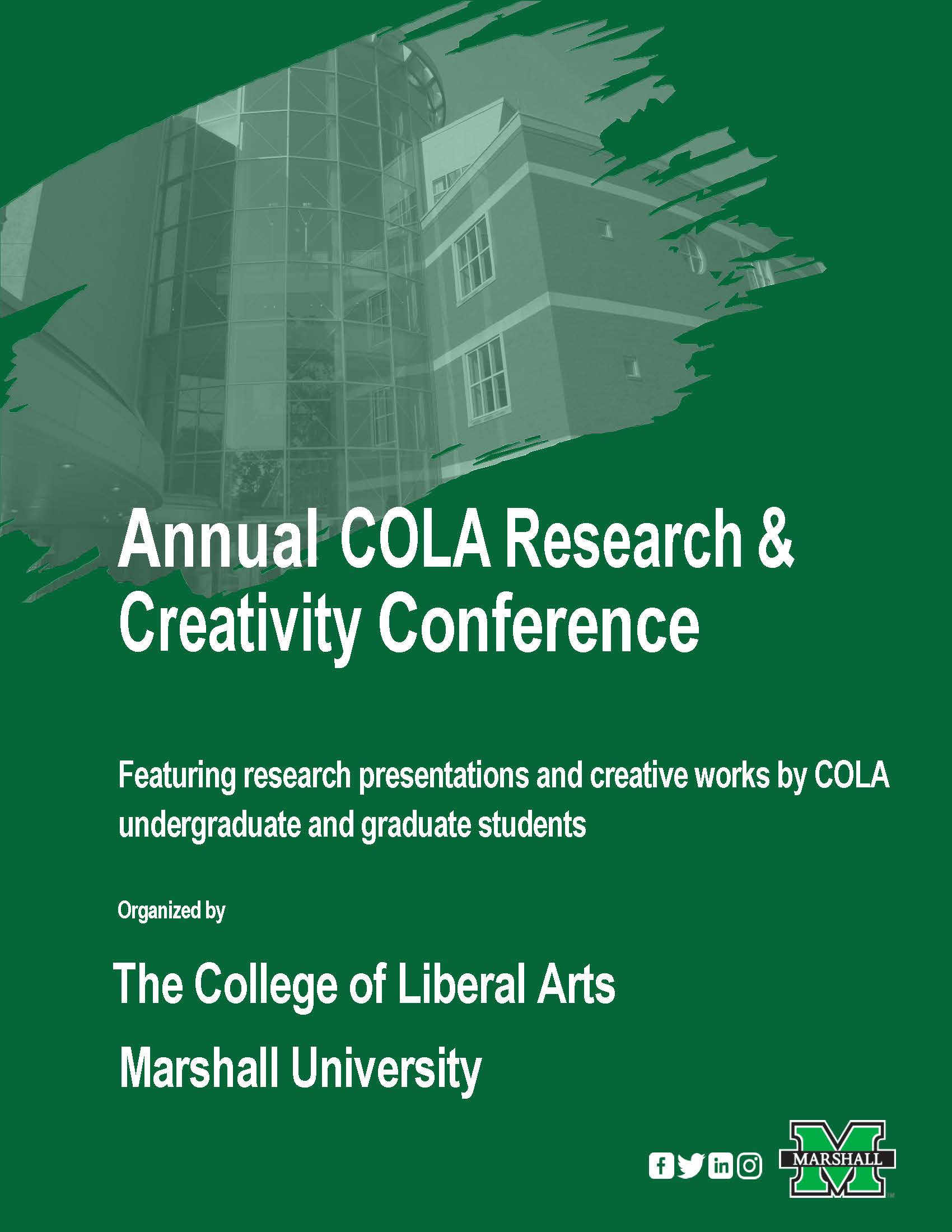Statistical Warfare: The Casualties of Higher Learning
Document Type
Panel Presentation
Start Date
21-4-2017 10:45 AM
End Date
21-4-2017 12:00 PM
Keywords
Statistics, Acceptance, Community
Biography
I was born in Huntington, WV where I’ve lived my entire life. My academic career started in 2006 after I graduated from Huntington High School. I attended Marshall Community & Technical College from 2006- 2008; and had a difficult time figuring out my future. I discontinued school until 2015. I found a job as a chef at Olive Garden since 2010. However, I found myself incomplete as I was not being challenged and wanted to finish what I had started. My drive and determination would lead me back to Marshall to finish what I had started.
Major
Exercise Science
Advisor for this project
John Stromski
Abstract
Matthew D. Kelley
Acceptance Over Time Equals Change
Author Blake Gumphrect in his book, The American College Town, discusses how defining characteristics of a college town are: progressive, liberal-minded, and socially mingled spaces. However, researching with various sources throughout Marshall University, I find that those characteristics aren’t always the case. This presentation examines veterans from World War II (1940’s) returning to school and how their attendance and presence at Marshall University influenced the school.
As seen in copies of The Parthenon, Marshall University’s student newspaper Marshall’s attendance dropped significantly during the 1940’s and grew post world war II. There are many classes and programs offered post-war, which increased the population at Marshall and the city of Huntington. Each year during the WWII, Marshall’s attendance grew with the help of veterans, both active and inactive. The veterans coming home also allowed Marshall to become more diverse; not only socially, but economically. The GI Bill being introduced helped Marshall’s income thus being able to accommodate its tuition; and set up better financial aid and scholarships to those who needed it.
With Marshall’s growth on campus in diversity, but most importantly in socioeconomics as result of veterans returning to campus; they weren’t just local veterans returning but different and diverse groups joining as well. This is evident through Marshall’s enrollment history through campus records, which is displayed through enrollment and tuition. The socioeconomic movement from veterans returning began the journey for Marshall University to become an openly accepting university.
Statistical Warfare: The Casualties of Higher Learning
Matthew D. Kelley
Acceptance Over Time Equals Change
Author Blake Gumphrect in his book, The American College Town, discusses how defining characteristics of a college town are: progressive, liberal-minded, and socially mingled spaces. However, researching with various sources throughout Marshall University, I find that those characteristics aren’t always the case. This presentation examines veterans from World War II (1940’s) returning to school and how their attendance and presence at Marshall University influenced the school.
As seen in copies of The Parthenon, Marshall University’s student newspaper Marshall’s attendance dropped significantly during the 1940’s and grew post world war II. There are many classes and programs offered post-war, which increased the population at Marshall and the city of Huntington. Each year during the WWII, Marshall’s attendance grew with the help of veterans, both active and inactive. The veterans coming home also allowed Marshall to become more diverse; not only socially, but economically. The GI Bill being introduced helped Marshall’s income thus being able to accommodate its tuition; and set up better financial aid and scholarships to those who needed it.
With Marshall’s growth on campus in diversity, but most importantly in socioeconomics as result of veterans returning to campus; they weren’t just local veterans returning but different and diverse groups joining as well. This is evident through Marshall’s enrollment history through campus records, which is displayed through enrollment and tuition. The socioeconomic movement from veterans returning began the journey for Marshall University to become an openly accepting university.




